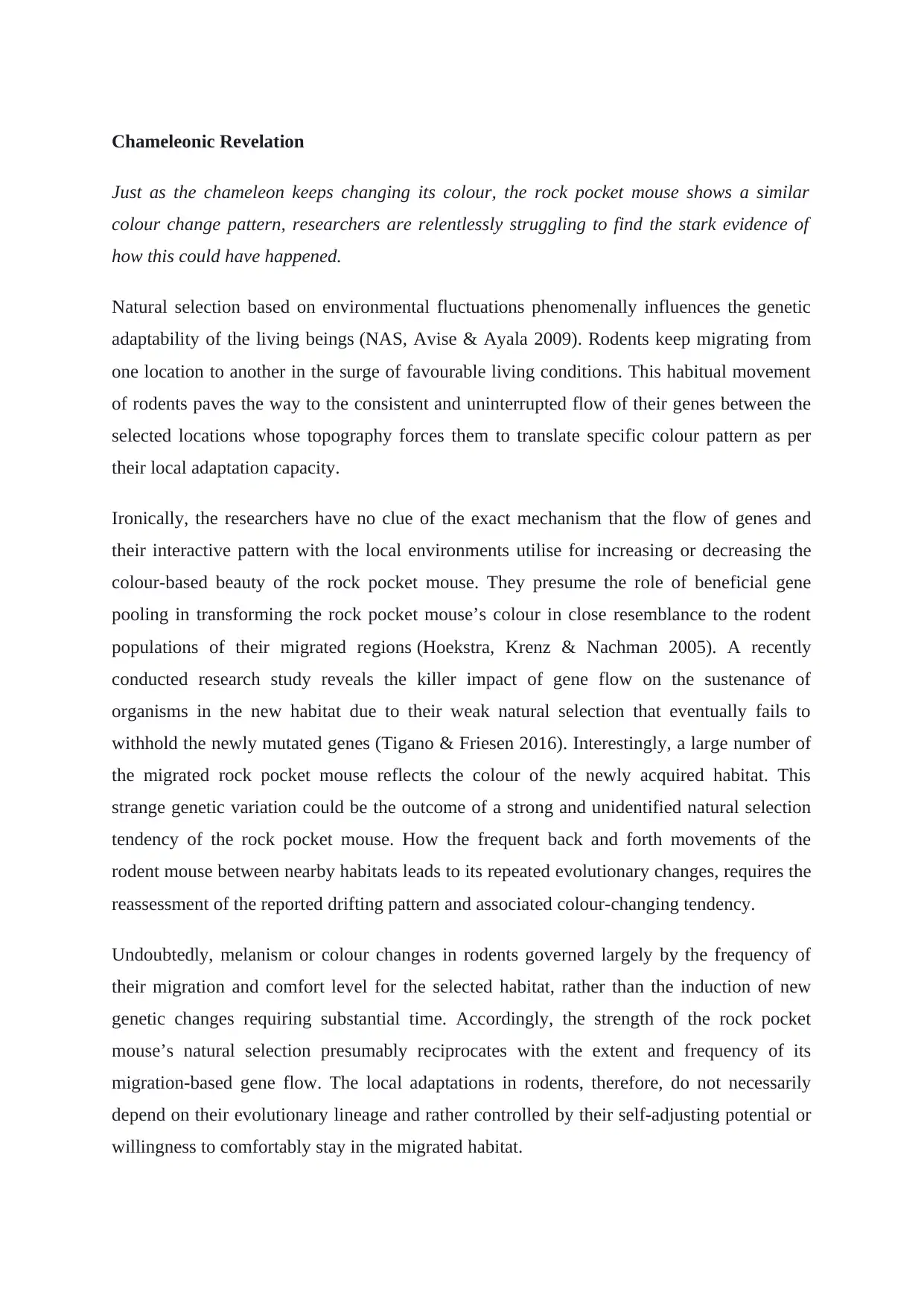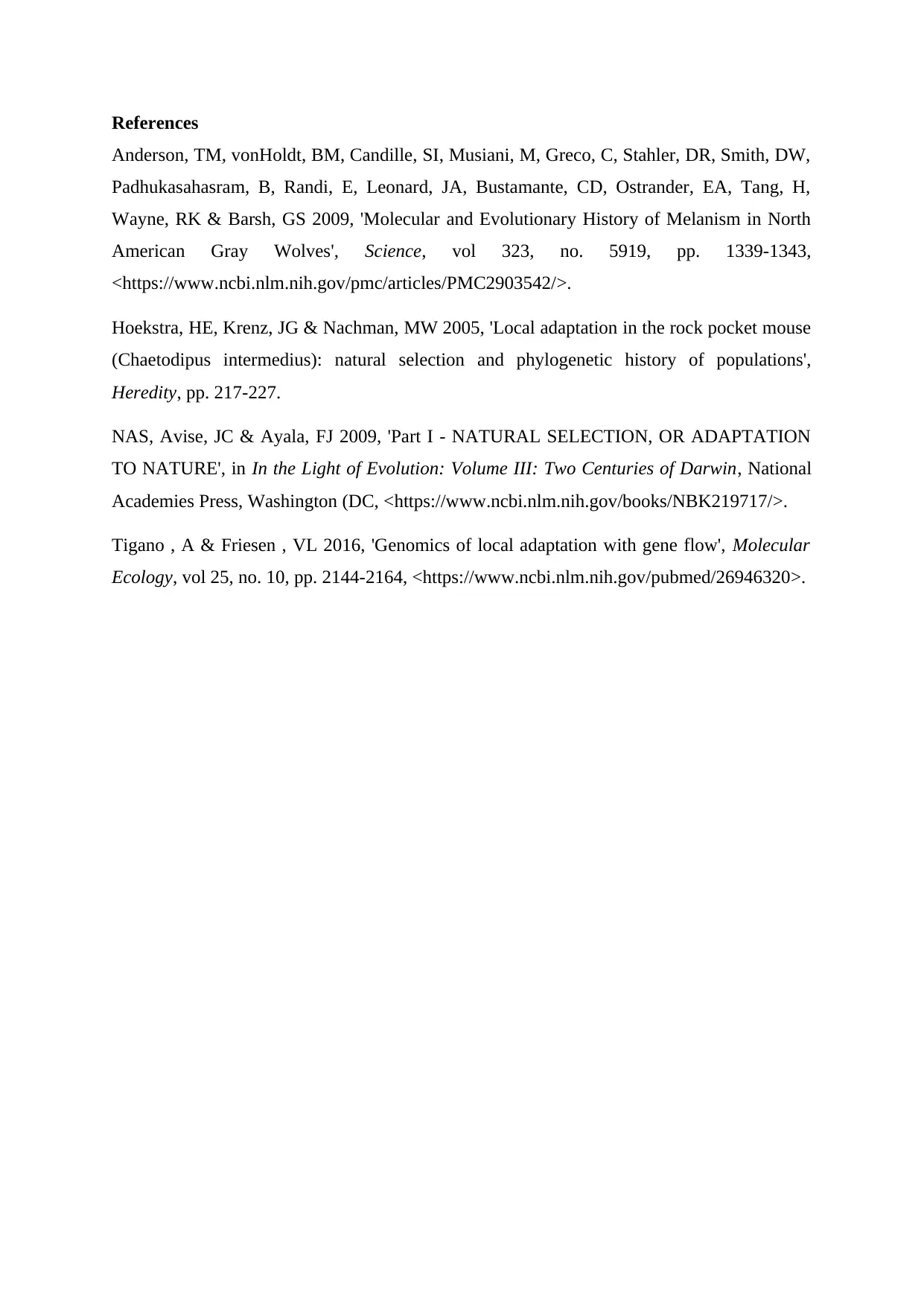Rock Pocket Mouse: Natural Selection and Color Adaptation Report
VerifiedAdded on 2022/09/18
|3
|714
|33
Report
AI Summary
This report delves into the color adaptation of the rock pocket mouse, a compelling example of natural selection and evolutionary biology. The study highlights how environmental fluctuations and habitat conditions drive the genetic adaptability of these rodents, leading to variations in coat color. It explores the role of gene flow in shaping the color patterns, particularly melanism, and how migration and habitat preference influence these changes. The research emphasizes that local adaptations are not solely dependent on evolutionary lineage but are also influenced by the rodent's ability to adjust to its environment. The report references several studies to support the connection between color variation in mammals and genetic adaptation, while also recognizing the need for further research into the complex mechanisms governing color changes and the impact of habitat-oriented genetic changes on the mouse's overall adaptation and morphology.
1 out of 3





![[object Object]](/_next/static/media/star-bottom.7253800d.svg)